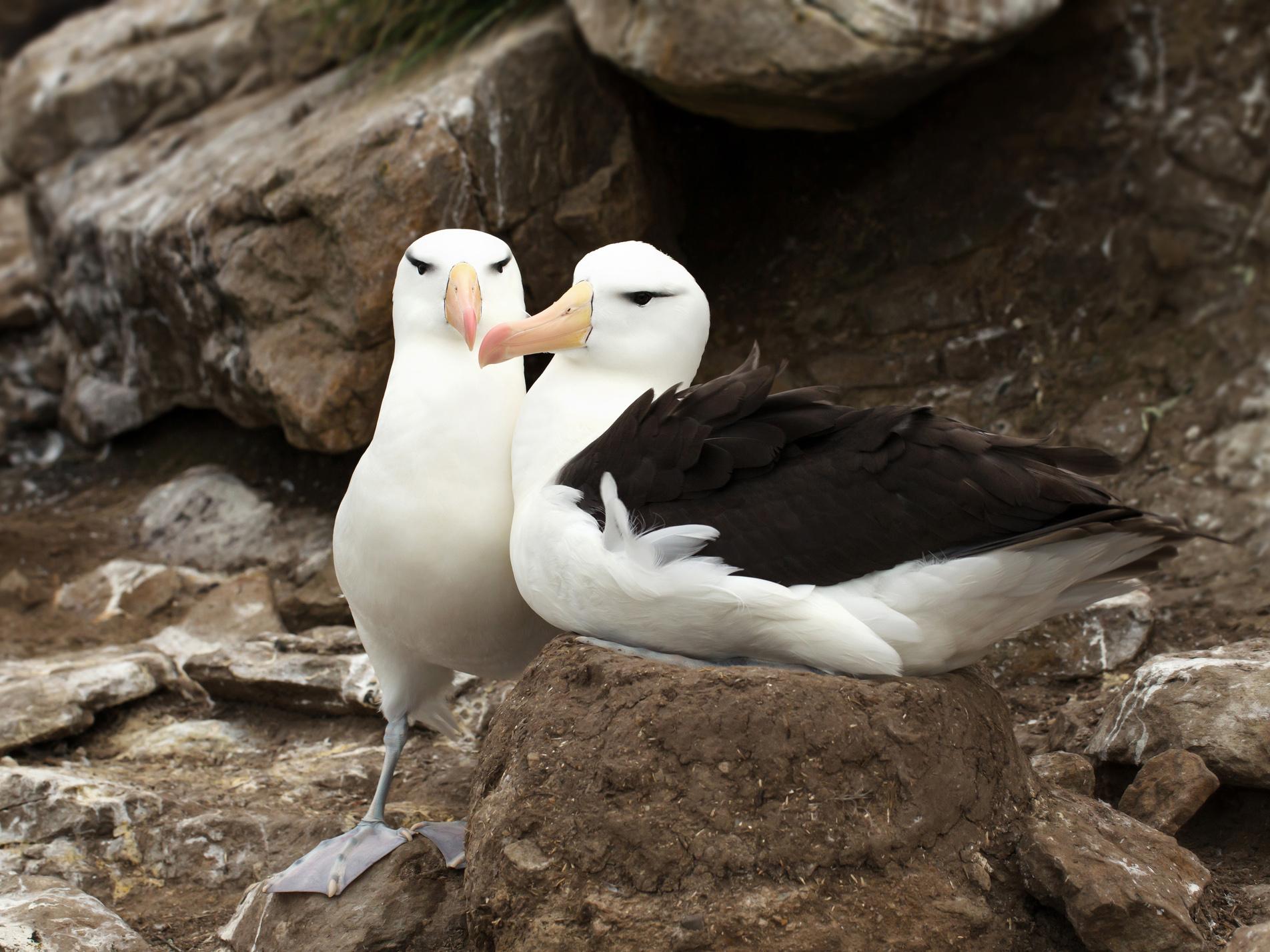Albatross ‘divorce’ rates up due to climate change, study finds
First evidence that environmental conditions play major part in splitting up famously faithful birds

Your support helps us to tell the story
From reproductive rights to climate change to Big Tech, The Independent is on the ground when the story is developing. Whether it's investigating the financials of Elon Musk's pro-Trump PAC or producing our latest documentary, 'The A Word', which shines a light on the American women fighting for reproductive rights, we know how important it is to parse out the facts from the messaging.
At such a critical moment in US history, we need reporters on the ground. Your donation allows us to keep sending journalists to speak to both sides of the story.
The Independent is trusted by Americans across the entire political spectrum. And unlike many other quality news outlets, we choose not to lock Americans out of our reporting and analysis with paywalls. We believe quality journalism should be available to everyone, paid for by those who can afford it.
Your support makes all the difference.Albatrosses, typically monogamous birds, are now increasingly splitting up because of ocean warming due to the climate crisis, a study has found.
These growing “divorce” rates between the birds might hinder their abilities to successfully raise their offspring, said the research, published in the journal Proceedings of the Royal Society B on Wednesday.
Over 90 per cent of all bird species are monogamous and splitting up is regarded as an adaptive strategy to correct for suboptimal partnerships triggered by previous breeding failures, said the researchers, including Francesco Ventura, a bird biologist at the University of Lisbon in Portugal.
While “divorce” rates among albatrosses were found to be typically less than 4 per cent on average, the study found this number doubled to nearly 8 per cent when the oceans were warmer.
The findings provide the first evidence that it is not just breeding failure, but also environmental conditions that play a part in “divorcing” the long-living monogamous birds.
Albatrosses have a decades-long lifespan and spend most of their time at sea, returning to land only to breed.
The familiarity and coordination which members of a pair gain from forming a monogamous bond is often essential for successfully raising healthy offspring, the scientists pointed out.
If the breeding fails, however, many albatrosses – mostly females – leave their partner and try to find better mates, the study noted.
In the research, the scientists assessed data collected between 2004 and 2019 on a large colony of black-browed albatrosses living on New Island in the Falkland Islands.
They tracked bird breakups that happened during this period and also found there were nearly 2,900 breeding attempts in 424 females.
Typically, only breeding success was thought to play a role in the birds splitting up, the scientists said.
With each female albatross in a pair laying just one egg during a breeding season, it was found that birds whose eggs didn’t hatch were over five times as likely to separate from their partners compared to those who succeeded.
While in many years, the researchers said this “divorce” rate was lower than 1 per cent, it reached a maximum of 7.7 per cent in 2017 when ocean waters were the warmest. This number lowered in the next two years when sea temperatures dropped.
“We detected temporal variability in the divorce rate in our study population on New Island, Falklands/Malvinas, so we wondered whether environmental fluctuations had a role in explaining the highs and lows of divorce,” Dr Ventura told The Independent.
“In our albatross population, the breeding rate and success are lower in years with warm sea surface temperatures anomaly,” he added.
This direct effect, the scientists said, might be due to the greater costs of reproduction in tough years, which birds pay by returning later to the colony and pairs pay by returning asynchronously to the breeding colony.
Explaining the role played by rising sea surface temperature, Dr Ventura said ocean warming affects prey availability of albatrosses by altering the supply of nutrients in the water.
“Specifically, high sea surface temperatures are indicative of resource-poor years. This is particularly worrying, as ocean warming is one of the observed and predicted consequences of climate change, also in the Southern Ocean home of our albatross population,” he added.
The researchers said physiological stress due to higher levels of stress hormones in the tougher years may also be another reason for the high “divorce” rates.
“For the first time, to our knowledge, we document the disruptive effects of challenging environmental conditions on the breeding processes of a monogamous population, potentially mediated by higher reproductive costs, changes in phenology, and physiological stress,” the scientists wrote in the study.
Join our commenting forum
Join thought-provoking conversations, follow other Independent readers and see their replies
Comments